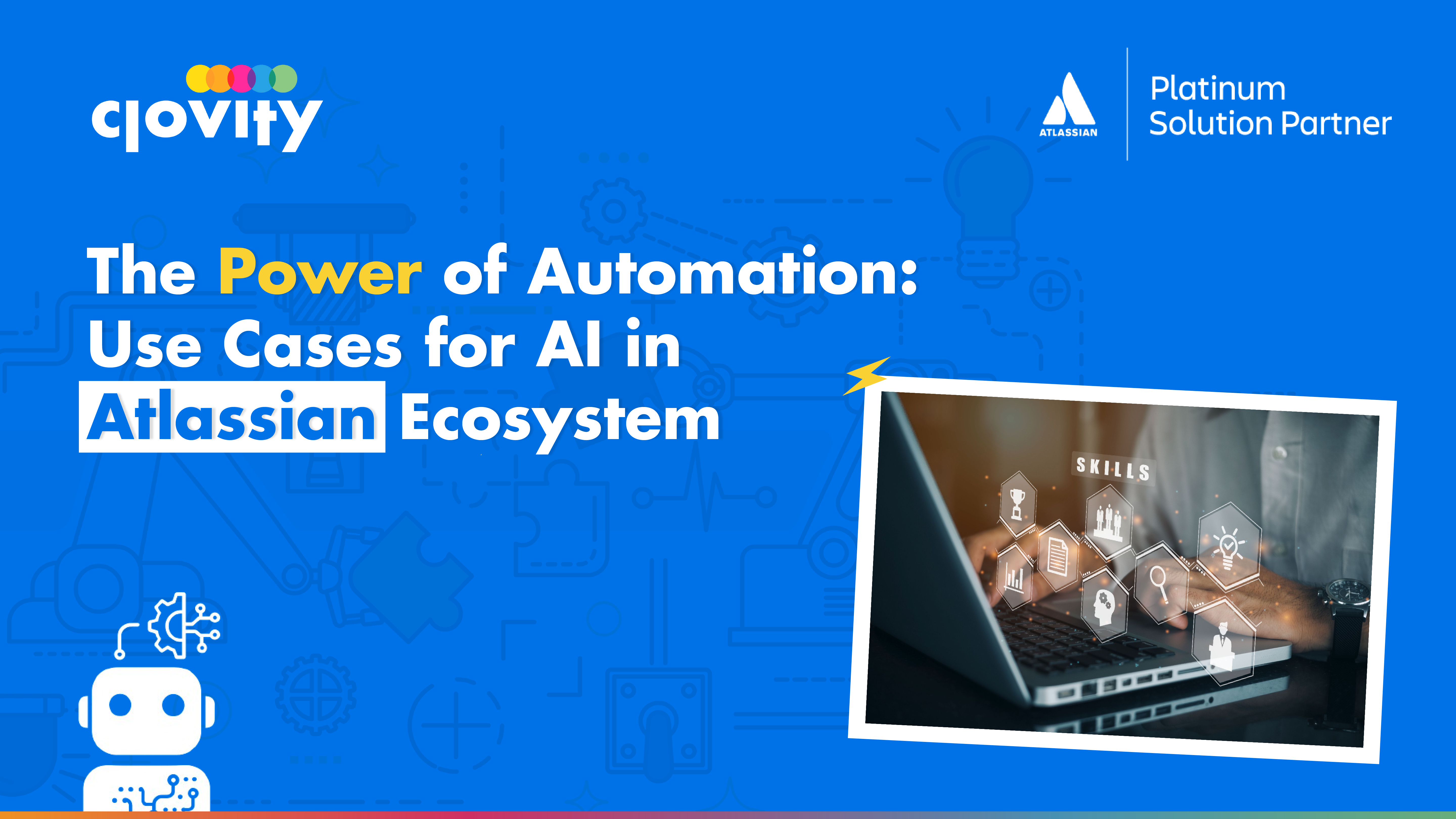In a typical enterprise environment, work rarely exists in isolation. Multiple teams use a mix of tools to manage tasks, communicate, and make decisions. The Atlassian ecosystem—home to Jira, Confluence, Bitbucket, and more—offers a connected foundation for these efforts. As organizations grow and work becomes more complex, integrating automation and artificial intelligence becomes essential.
Automation within the Atlassian ecosystem isn’t about replacing people—it’s about removing repetitive steps, reducing manual errors, and freeing up time so teams can focus on high-value work. Meanwhile, AI brings intelligence into routine workflows, helping teams gain faster insights and make smarter decisions.
Let’s explore where automation and AI are already making an impact—and where they can go next.
1. Reducing Manual Work with Jira Automation Rules
Jira’s native automation engine is an accessible entry point for no-code rules that define triggers, conditions, and actions to keep work flowing without manual intervention. Common use cases include:
- Auto-assigning tickets based on component, priority, or workload balance
- Escalating issues if they remain in a particular status for too long
- Sending alerts or reminders based on due dates or ticket activity
- Updating linked issues, such as automatically closing subtasks when the parent issue is completed
These built-in automations require no custom development or external apps and can be shared across projects to ensure SLA compliance and align workflows with best practices.
2. Automating Service-Desk Workflows in Jira Service Management
In ITSM environments, custom automations in Jira Service Management improve request resolution and agent efficiency. Practical examples include:
- Triggering approval workflows when specific forms are submitted
- Sending automated responses to tickets submitted outside business hours
- Linking incidents to problems automatically for faster root-cause analysis
- Closing tickets after inactivity, with a courtesy note to the user
These rules help IT teams manage high volumes of requests without sacrificing service quality.
3. Bringing AI to Jira: Natural-Language Processing for JQL
AI can simplify Jira Query Language (JQL) by interpreting natural-language input and converting it into accurate JQL syntax. For example:
project = MOBILE AND issuetype = Bug AND priority = High AND status = Open
This reduces dependency on advanced Jira users and makes powerful queries accessible to everyone.
4. Enhancing Knowledge Management with Smart Recommendations
Confluence content is only valuable if teams can find and apply it. AI-driven enhancements include:
- Smart page suggestions based on your current context
- Tag recommendations to improve search accuracy
- Duplicate-page detection to reduce content sprawl
- Summarization features for long pages or meeting notes
5. Predictive Analytics for Project Risk and Resource Planning
AI models trained on project history and team behavior can predict issues before they escalate, such as:
- Tasks likely to run over time based on historical velocity
- Teams at risk of overcapacity
- Projects prone to scope creep due to frequent re-openings
6. AI in DevOps: Smarter Deployment Pipelines and Incident Insights
Bitbucket Pipelines, integrated with Jira and Opsgenie, support automation in CI/CD. AI enhances this by:
- Suggesting reviewers based on pull-request patterns
- Tagging incidents with root-cause suggestions from log-pattern analysis
- Auto-generating post-incident summaries for faster documentation
7. Streamlining Onboarding and Offboarding Workflows
HR and IT teams use Jira Service Management for employee lifecycle events. AI can improve these workflows by:
- Auto-filling forms based on employee profiles
- Flagging missing steps before provisioning begins
- Notifying departments when interdependent tasks are delayed
- Auto-generating exit summaries with asset logs and approvals
8. Custom Bots and Virtual Agents
Virtual agents in JSM provide basic support through scripted flows. AI makes these bots smarter by:
- Understanding natural-language requests
- Escalating based on urgency cues
- Automatically generating tickets with relevant metadata
- Guiding users to Confluence solutions
Getting Started: Where to Begin with Automation and AI
Not every initiative requires advanced AI. Many gains start with simple Jira or JSM automation rules. As teams mature, experiment with AI-driven apps from the Atlassian Marketplace or integrate external tools like Slack or Zapier.
Identify your friction points—repeated tasks, delays, or errors—and choose the right areas to automate or augment with AI.
Final Thoughts
The Atlassian ecosystem has always emphasized visibility, traceability, and collaboration. By applying automation and AI in practical ways, teams can reduce manual overhead and make smarter use of the tools they rely on. Start small, measure impact, and build momentum over time.


